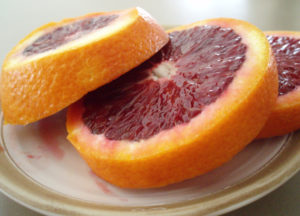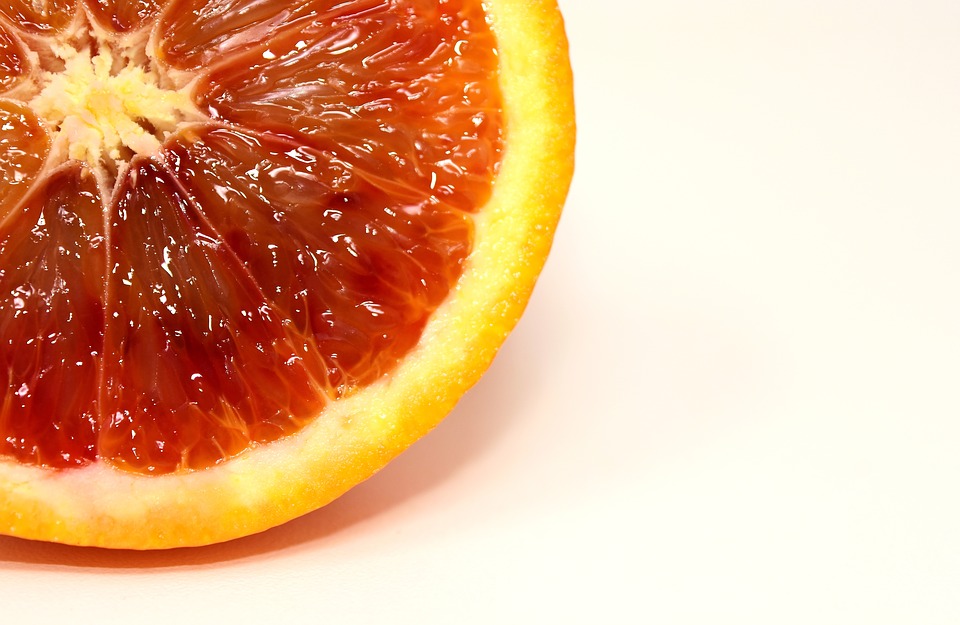The blood orange is a type of orange with crimson, almost blood-colored flesh. The distinctive dark flesh color is due to the presence of anthocyanins, a family of antioxidant pigments common to many flowers and fruit, but uncommon in citrus fruits. Take a look below for 23 more interesting and fascinating facts about blood oranges.
1. Chrysanthemin is the main compound found in blood oranges.
2. The flesh of blood oranges develops its characteristic maroon color when the fruit develops with low temperatures during the night.
3. Sometimes, dark coloring is seen on the exterior of the rind, as well, depending on the variety of blood orange.
4. The skin of a blood orange can be tougher and harder to peel than that of other oranges.

5. Blood oranges have a unique flavor compared to other oranges, being distinctly raspberry-like in addition to the usual citrus notes.
6. The blood orange is a natural mutation of the orange, which itself is a hybrid, probably between the pomelo and the tangerine.
7. Within Europe, the arancia rossa di Sicilia, or the red orange of Sicily, has Protected Geographical Status.
8. In the Land of Valencia, the blood orange was introduced in the second half of the 19th century.
9. The three most common type of blood oranges are the “Tarocco,” which is native to Italy, the “Sanguinello,” which is native to Spain, and the “Moro,” which is the newest of the three.
10. Less common types of blood oranges include the “Matlese,” “Khanpur,” “Washington Sanguine,” “Ruby Blood,” “Sanguina Dobla Fina,” “Delfine”, “Red Valencia”, “Burris Blood Valencia,” “Vaccaro”, “Sanguine grosse ronde,” “Entra Fina,” and the “Sanguinello a pignu.”

11. The “Maltese” blood orange is known to be the sweetest.
12. The “Moro” is the most colorful of the blood oranges, with a deep flesh and a rind with a bright red blush. The flavor is stronger and the aroma is more intense than a normal orange.
13. The “Moro” blood orange is believed to have originated at the beginning of the 19th century in the citrus-growing area around Lentini, in the Province of Siracusa in Sicily, as a bud mutation of the “Sanguinello Moscato.”
14. The “Moro” is a deep blood orange, meaning that the flesh ranges from orange-veined with ruby coloration, to vermilion, to vivid crimson, to nearly black.
15. The name “Tarocco”, for the blood orange type, is believed to be derived from an exclamation of wonder expressed by the farmer who was shown this fruit by its discoverer.

16. The “Tarocco” is the most poplar blood orange in Italy. It’s thought to have derived from a mutation of the “Sanguinello.”
17. The “Tarocco” is referred to as “half-blood,” because the flesh isn’t accentuated in red pigmentation as much as with the “Moro” and “Sanguinello” varieties.
18. The “Tarocco” is one of the world’s most popular blood oranges because of its sweetness and juiciness. It also has the highest vitamin C content of any orange variety grown in the world.
19. The “Sanguinello” blood orange was discovered in Spain in 1929, has a reddish skin, few seeds, and a sweet and tender flesh.
20. Blood oranges may have originated in either China or the southern Mediterranean, where they have been grown since the 18th century.
21. The anthocyanins, which give the orange is distinct maroon color, will only develop when temperatures are low at night, as during the Mediterranean fall and winter.

22. Blood oranges cultivated in the United State are in season from December to March, and from November to May.
23. Blood oranges can be used to create marmalade, and the zest can be used for baking. A popular Sicilian winter salad is made with sliced blood oranges, sliced bulb fennel and olive oil.




